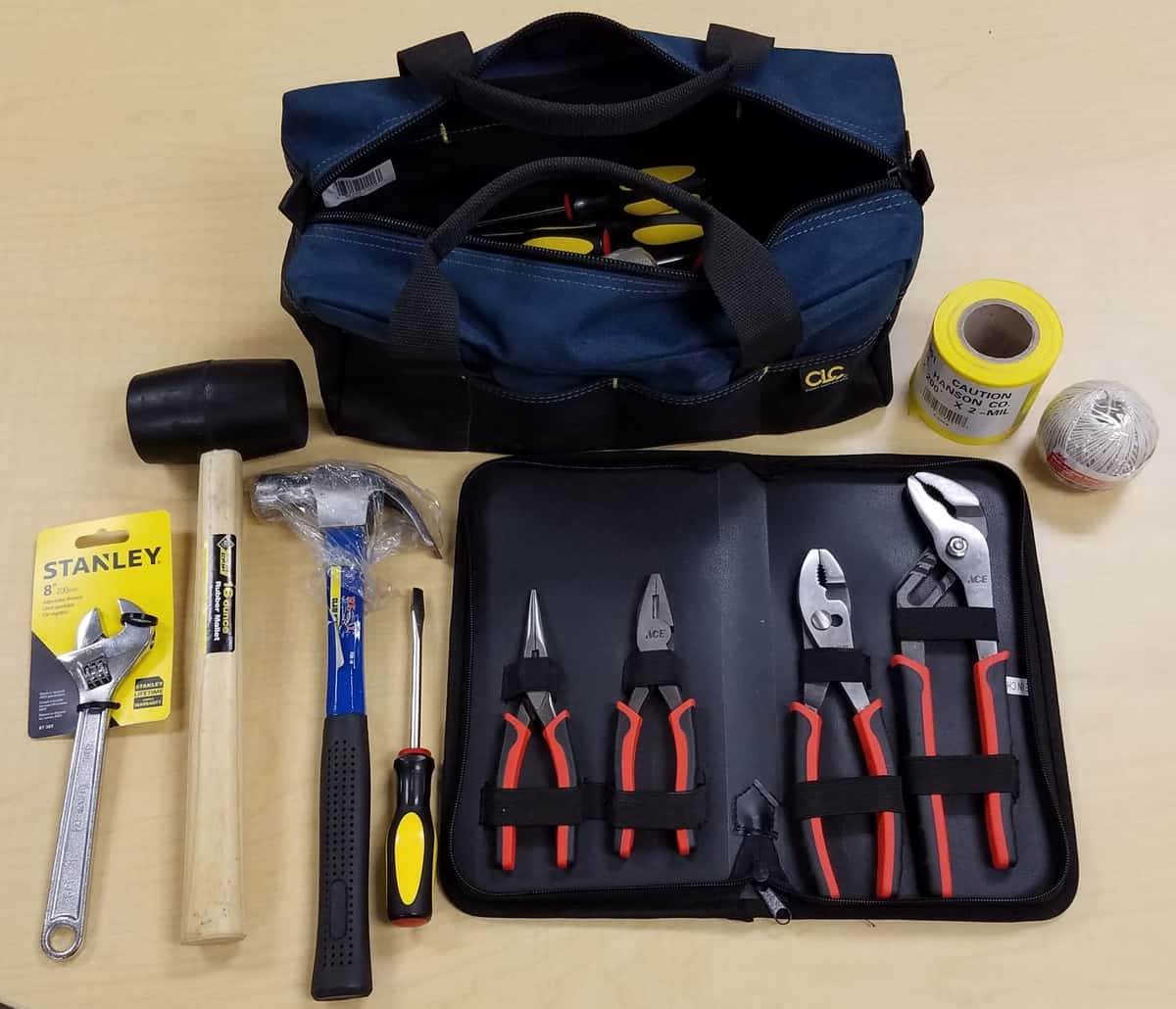By Nancy E Kraft
Originally printed in The Gristmill, A Publication of the Mid-West Tool Collectors Association, March 2019, p. 45.
Check out part one of this blog post.

My Trunk Kit has expanded from a flashlight and a screw driver to include pliers, wrenches, screwdrivers, a hammer, mallet, crowbar, string, twine, utility knives, caution tape, duct tape, gloves, scissors, flash lights, a “head” light, and hiking boots. The crowbar is handy for prying swollen doors and drawers open. Wet books swell, become jammed into shelves, and often need to be tapped out with a mallet. Ideally, all items will have wood or rubber handles to protect from electrical conductivity. In addition to the trunk kit, I utilize whatever I can find at hand. Window screens are handy for drying out fabrics, thin paper and photographs. String or rope can be strung up between trees and CDs, DVDs, slides, and photographs can be hung up to dry.
Conservation recovery tools have also evolved over the last 25 years. We have multiple types of erasers, brushes, bone and Teflon tools, spatulas, tweezers, and knives for cleaning. We have learned to rinse off the mud and gunk, let material dry and then gently clean the remaining dirt and mud by erasing, scraping, separating pages with the use of multiple tools. I am always amazed at what can be repaired and returned to the library or museum for continued use.